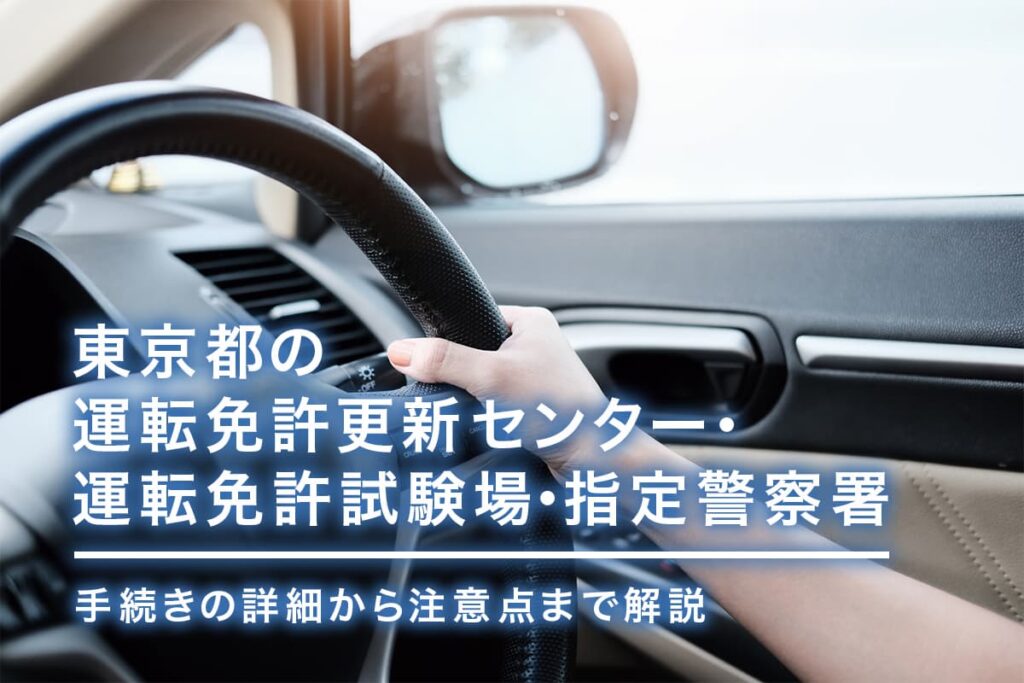What are the questions on the academic exam?

The written exam mainly tests your knowledge of driving methods and laws. The written test is a test to check whether you have acquired the driving knowledge suitable for driving on the road. Therefore, questions will be asked about knowledge essential to driving a car, such as driving rules and road traffic laws.
There are two written exams in total before you can obtain your license, and after passing the written exam for the provisional license, you must also pass the written exam for the main license. The written exam for the provisional license has a time limit of 30 minutes and 50 questions are asked, while the written exam for the main license has a time limit of 50 minutes and has 95 questions.
Both are true/false style questions in which you have to answer whether the wording question is correct or incorrect, and you will pass if you answer 90% or more correctly.
Trends and strategies for academic exams! Be careful of trick questions!

We will explain the questions and trick questions that are easy to get wrong on the written exam. We will also introduce examples of trick questions that have been asked in the past, so stay calm, read the questions carefully, and take measures to avoid getting stuck.
Problems that are easy to get wrong
Here are some questions that have been asked in the past that are particularly easy to get wrong. Be sure to acquire the correct knowledge now.
Katakana questions that appear frequently
Problem: When driving at high speed when the road surface is covered with water, the tires may slide on a film of water, a phenomenon called fade.
Answer: ×
Fade is a phenomenon in which brakes become less effective due to heat. Hydroplaning is a phenomenon in which a car floats on a film of water that forms between the road surface and the tires, causing the steering wheel and brakes to become ineffective. In this way, it is easy to make mistakes when it comes to katakana problems that we are not used to hearing, such as "fade phenomenon," "hydroplaning phenomenon," and "vapor lock phenomenon." Let's remember this carefully.
Yellow steady and flashing signals
Problem: When facing a yellow traffic light, cars, trams and pedestrians can proceed with caution towards other traffic.
Answer: ×
If it is a flashing yellow signal, you can proceed while paying attention to other traffic, but if you read the question carefully, it is a "yellow light signal" and not a flashing signal, so it means "stop". . If it's a flashing yellow light, the sentence is correct, so it's easy to get stuck on it by mistake, but it's important to read the question carefully to see if it says "blinking" before answering.
No passing or parking allowed
Problem: It is prohibited to park or stop within 30 meters of an intersection.
Answer: ×
Overtaking is prohibited from 30 meters before an intersection, and parking is prohibited within 5 meters from an intersection. Let's clearly remember numerical problems such as how many meters it was like this.
Expressway speed limits by vehicle type
Problem: The maximum speed of a large freight vehicle on a national highway is 80 km/h.
Answer:〇
For large passenger cars (buses), the maximum speed on national highways is 100 km/h, but for large freight vehicles, the correct answer is 80 km/h. Please read the question carefully and answer whether it is "cargo" or "passenger".
Rules for motorized bicycles and motorcycles
Problem: At an intersection on a road with three or more vehicle lanes, where traffic control is in place, a motorized bicycle attempting to make a right turn will be forced to move to the left edge of the road, even if the traffic division is designated by a sign or marking. I have to stop by and pass by.
Answer:〇
When a motorized bicycle traveling on a three-lane road turns right at an intersection where traffic control is in place (there is a traffic light), a two-step right turn must be made.
However, if there is a sign prohibiting a two-step right turn, make a short right turn like a regular car. It's easy to make mistakes when it comes to issues with detailed regulations, so be careful and remember them.
The right lane is not only for speeding vehicles.
Problem: On a road with two lanes, faster cars must travel in the lane on the right.
Answer: ×
Even on roads with multiple vehicle lanes, there is basically no relationship between ``speed'' and ``lane selection.'' When driving on a road with multiple lanes, it is important to keep the rightmost lane open.
Towing rules and licenses
Problem: You don't need a towing license to tow a broken-down vehicle weighing over 750 kg with a rope. Answer:〇
Because a car breakdown is an unpredictable emergency, a license is not required regardless of the weight of the car. It is necessary to securely connect the vehicle with a strong rope, attach a white cloth (at least 0.3m square) to the rope, and have a person with a license to drive the broken-down vehicle ride the vehicle and operate the steering wheel. However, it cannot be towed on the highway.
trick question
Here are some trick questions that have been asked in the past. Please keep this in mind so you don't get stuck if a similar problem occurs.
Problems with assertions such as “absolutely” or “definitely”
Problem: While driving a car, you should never brake suddenly.
Answer: ×
Please be careful if you are asked a question with 100% statements such as "absolutely," "definitely," and "under any circumstances." For example, in situations where human life is a priority, there may be cases where sudden braking is unavoidable, so we cannot say ``absolutely''.
It is also a good idea to remember that the answer to questions such as ``absolutely'', ``always'', and ``in any case'' is often no.
When to signal a change of course: “30m?” “3 seconds?”
Problem: When changing course while traveling in the same direction, the time to signal is when you are 30 meters before the change.
Answer: ×
The signal to signal 30 meters before turning is when turning right or left, and the signal to change direction is 3 seconds before you are about to change course. Let's distinguish and understand these rules that are easy to confuse.
Even when pedestrians are included in "all"
Problem: When facing a flashing red light, vehicles and pedestrians must stop at a stop.
Answer: ×
A flashing red signal has the same meaning as "pause". Cars must stop, but pedestrians are not required to stop and can proceed while paying attention to other traffic. Therefore, only pedestrians do not need to stop. Please read the question carefully to find out who is being suspended.
"Just before the traffic light" "Just before the intersection"
Problem: If there is no stop line at an intersection with a signal, the stopping position is just before the signal.
Answer: ×
If there is a stop line, the correct stopping position is ``just before the stop line,'' but if there is no stop line, the correct answer is ``just before the intersection,'' not just before the traffic light.
Where do you measure the height of cargo that can be loaded?
Problem: The limit for loading luggage onto the carrier of a motorcycle is within 2 meters from the loading device.
Answer: ×
The correct answer is to measure the height of the cargo to be loaded "from the ground." Even if the number 2 meters or less is correct, it is not ``from the loading device'' but ``from the ground,'' so be careful where you measure from when answering.
Bicycle and pedestrian signs
Problem: Vehicles, bicycles, and pedestrians are all prohibited from passing where there is a road closure sign.
Answer:〇
Even though it's a driver's license test, if you don't memorize road signs that also apply to bicycles and pedestrians, you won't be able to score. Don't forget to check the signs for bicycles and pedestrians.
Is parking prohibited on steep uphill slopes?
Problem: Parking is prohibited near the top of an uphill slope or on a steep downhill slope, but parking is not prohibited on a steep uphill slope.
Answer: ×
In the case of steep slopes, it is prohibited to park or park while going up or down. Similar to this problem is the question of where overtaking is prohibited on steep slopes, but when asked about the prohibition of overtaking, the answer is ``passing is prohibited only near the top of the uphill slope.'' It is possible to overtake on the way uphill, so remember to avoid confusion.
Is it possible to pass on the other side of the crosswalk?
Problem: Passing or overtaking other vehicles is prohibited at and within 30 meters of a crosswalk or bicycle crossing zone, but it is not prohibited on the other side.
Answer:〇
Passing is prohibited within 30 meters of a crosswalk or crossbar, so you can pass if you pass through that area. If you are asked about a place where parking is prohibited, rather than overtaking, the prohibited place is ``before or after'' that area, but in the case of overtaking, it is only ``prohibited in front'' and you can park on the other side past that place.
Study method to pass the written exam on the first try

From here, we will explain study methods and tips to pass the written exam on the first try.
I memorize the problems given at the driving school by solving them over and over again.
At driving schools, we track the pass rates for provisional licenses and regular licenses every month. Therefore, the questions you receive at the driving school are likely to reflect the latest question trends. Also, some driving schools have PCs available so you can practice solving problems at your own convenience.
Use these PC practice tools and problem sets you receive at driving schools to repeatedly solve problems and acquire solid knowledge. Please make use of the online teaching materials below, which will help you understand trick questions and more just by watching the videos.
only this! 4 things you should know before taking academic training at a driving school
Receive effect measurement and practice
When taking a written test for a provisional license at a driving school, you must pass a test called ``effect measurement'' a specified number of times. This effectiveness measurement will be a dry run for the actual written exam, as 50 questions will be asked that are similar to questions that have been asked in the past on the written exam or questions that are similar to the content that will actually be asked.
By looking at questions that have been asked in the past or questions that are similar to the questions that will actually be asked, you will be able to get a feel for the phrasing of the questions and the trends in the questions. Take the exam in the same way as the actual written exam, but remember any mistakes you make and prepare accordingly.
Understand problems that are easy to get wrong
There are questions on the written exam that are easy to get wrong, so be sure to understand the trends and what types of questions are said to be easy to get wrong.
Past question sets are commercially available, and driving schools also conduct tests to measure effectiveness based on past questions. Please make use of the self-study questions on the PC, which are available in the study rooms of driving schools, as they are similar to past questions.
Problems that are most likely to be mistaken are those that have many detailed regulations, such as parking and stopping, traffic lights, overtaking and overtaking. Take measures to remember the correct knowledge, down to the detailed regulations, of the range of questions that are said to be easy to get wrong.
If you prepare well, you can pass the written exam on the first try.

The passing score for the written test is 90 points out of 100, which is a high score, but it is not that difficult if you remember what you learned at the driving school and take the test preparation methods explained above.
Don't rush, read the questions calmly, and be careful not to get caught up in any trick questions. Use this article as a reference to get a good score on the questions that are easy to get wrong, and pass the main entrance exam on the first try.








